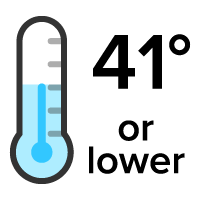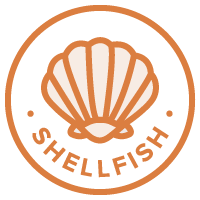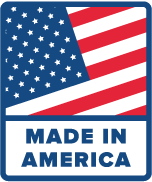Details
On a sun-soaked estuary where fresh and salt water intertwine, the famous Rappahannock Oyster Co. 75 count live Olde Salt middleneck clams live and thrive. Infused with the natural merroir of Virginia's seafood-famous Chincoteague Bay, these clams feature a perfect briny salinity yet small afternotes of subtle sweetness. They're bursting with a rich, creamy, and firm texture that gives middlenecks their definitive bite, and are filled with nourishing Vitamin B and iron. Middleneck clams typically measure around 1 1/4" in diameter, while having the overall classic bivalve taste of a rich, briny, and complex flavor profile.
Middleneck clams are widely versatile when made with different cooking applications. They can be shucked and served raw on the half shell on a bed of ice, served over pasta for Spaghetti alle Vongole, stuffed and broiled for the iconic Clams Casino, or steamed over seaweed amongst other crustacean in a New England clambake. Other cooking methods include stuffing, broiling, roasting, or steaming the clams and serving in a light cream or spicy tomato sauce.
To store in a refrigerator, line a damp towel along a rimmed baking sheet. Place the clams in a single layer along the towel, and place another damp towel on top of the clams. You can also place them on a bed of ice, but be cautious of this method as clams have a higher mortality rate when iced and re-iced. Clams are easiest to open after they have been cooling in the refrigerator for a few hours. The cold relaxes the muscles that usually keep the shell tightly clamped down. If a clam is already open before you try to open it, tap the clam to see if it closes. If the clam does not close when you tap it, discard the clam. To clean the clams right before serving, let them soak in fresh water for 10-20 minutes. This will flush out any sand or water that is in their shell. Only do this before you are about to serve raw on the half shell or prepare them with a cooking application as having clams sit in freshwater for an extended period of time will kill the clams, causing them to go bad quickly. As per ServSafe guidelines, remember to keep the tag on file for 90 days.
In 2001, the Chesapeake Bay was hitting its lowest oyster harvesting period yet. This once fruitful body of water became almost bivalve-desolate, until a few individuals rose to the occasion to resurrect the once famous oyster production. Rappahannock Oyster Co. not only restored the native Bay oyster, but they made it thrive, hitting new oyster production records that haven't been noted in decades. Through oyster and clam farmers using sustainable aquaculture methods, chefs seeking out high-quality mollusks, patrons purchasing and eating responsibly-raised seafood, and even politicians passing bills in favor of purpose over profit, the Chesapeake Bay is singing with premium bivalves, and is once again known as one of the greatest oyster regions in the world. Now, Rappahannock Oyster Co. lives by their mission: "good food, grown well" as a constant reminder of what a community can do when everyone comes together to celebrate their region's food.
Because this item is not stocked in our warehouse, processing, transit times and stock availability will vary. If you need your items by a certain date, please contact us prior to placing your order. Expedited shipping availability may vary. We cannot guarantee that this item can be cancelled off of the order or returned once it is placed.



